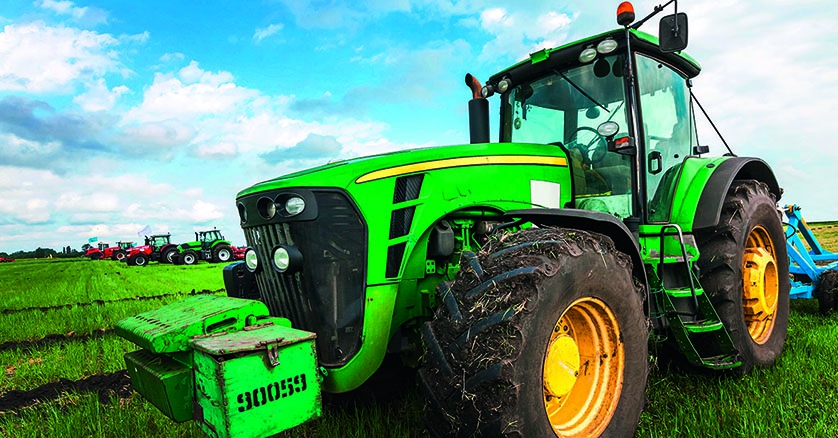
Modern pressure transmitters enable exact control of agricultural chemical application In a risky business fraught with floods, drought, hail, tornadoes, and wildly fluctuating commodity prices, the last thing farmers need to worry about is their machinery.
Modern farm equipment is both high-tech, packed with useful operational and safety features, and rugged, built to stand up to years of rough use and outdoor exposure. Furthermore, modern agricultural equipment is typically multipurpose so a farmer can attach a plow, cutting boom, or chemical applicator to a combine, depending on the need. Farmers are absolutely reliant on their equipment and typically expend a good deal of time and effort maintaining that equipment. The hydraulic systems of agricultural combines and other farm machines are especially important because they play such key roles in operational and safety functions.
Pressure transmitters regulate fertilizer and pesticide application
One of the critical functions of a hydraulic system in an agricultural combine is controlling the level of a moving boom, typically either a cutting boom or a chemical-applicator boom. The boom needs to remain at a constant level when cutting the crop and applying fertilizers and pesticides. Failure to do so can have serious consequences, particularly if chemicals are over-applied. Fertilizers, pesticides, and herbicides are integral to modern agriculture, but these powerful agents must be applied with great care, as over-application can have serious environmental consequences and impact yield. That is why 21st-century agricultural machinery uses pressure transmitters for reliable, accurate boom control. A pressure transmitter contains a sensor that can detect minute changes in fluid pressure. Agricultural machinery uses pressure transmitters as a part of sophisticated control systems where the transmitter communicates with actuators in the boom to micro-adjust parameters such as height or chemical flow rate. This control means a dramatic risk reduction for farmers: chemicals are applied efficiently with little worry about significant under- or over-application.
Chemical over-application can have serious consequences
Application of chemicals, especially pesticides, has long been considered one the more difficult and dangerous jobs on a farm. The Environmental Protection Agency and most state agencies have relatively stringent regulations for pesticides, herbicides, and protective equipment for people applying these chemicals. Putting too much fertilizer on crops will burn them, while applying too little means a reduced yield. Accurate application of pesticides is equally important; too little leaves crops vulnerable to pests, and too much can have a serious impact on the health of workers and local fauna. EPA regulations related to the Clean Water Act define maximum levels of chemical pollutants allowed to run off into local water sources, and violations can lead to significant fines. Modern pressure transmitter-based hydraulic control systems using ultra-reliable, agriculture industry-designed pressure transmitters such as WIKA Instrument’s Mobile Hydraulic Pressure Transmitters Models MH-1, MH-2, MHC-1, and MHS-1 virtually eliminate the possibility of unrecognized equipment failure during chemical application. Tough, high-tech WIKA pressure transmitters cost a little more than standard, off-the-shelf transmitters, but they more than pay for themselves in risk reduction and peace of mind.

